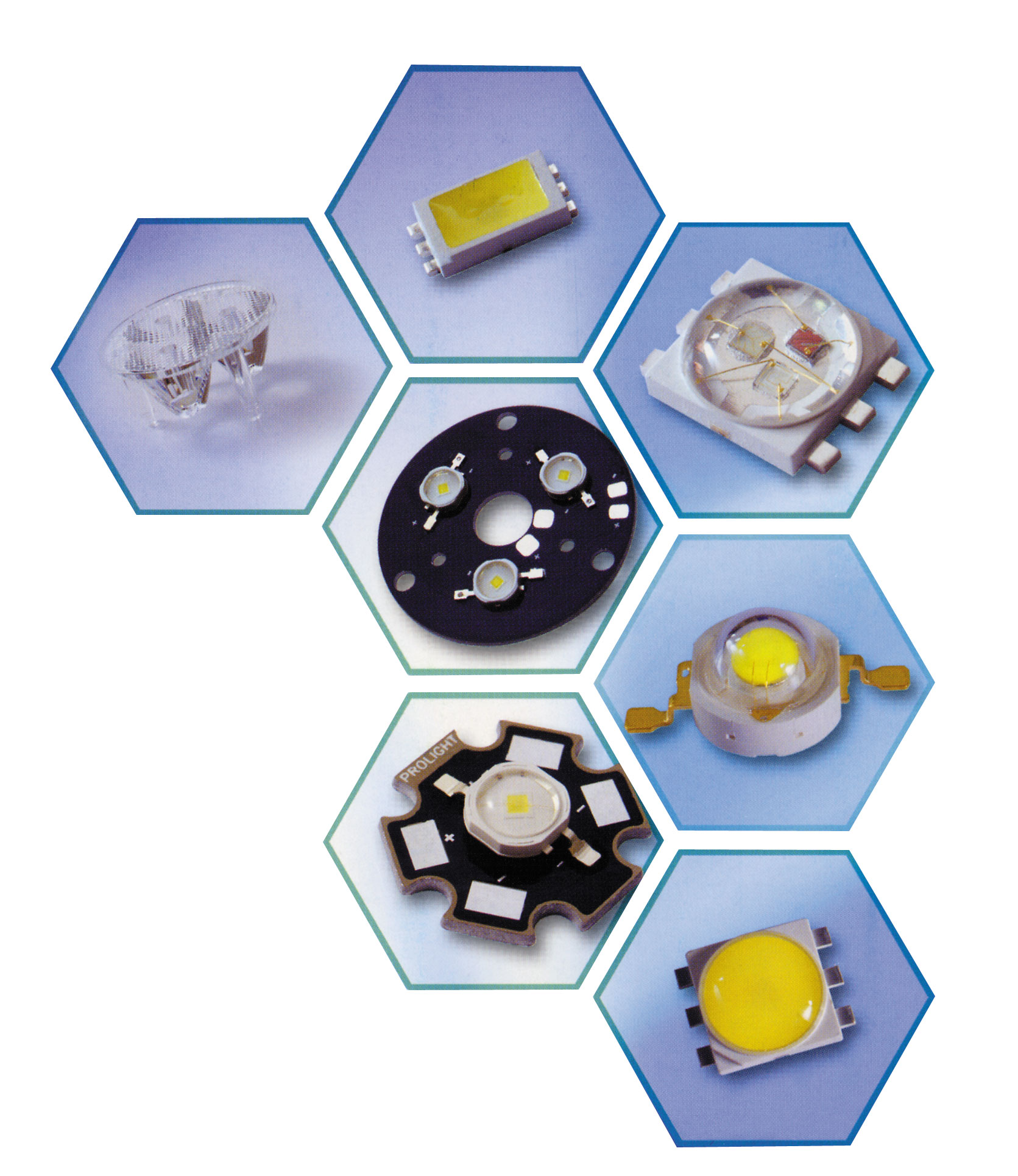ProLight Opto Technology is a Total Lighting Solution Provider
2008/10/09 | By Ken Liu | PROLIGHT OPTO TECHNOLOGY CORPORATIONAt a solid-state lighting symposium held early May this year at the National Central University in Taiwan, Michael Hsing, president of LED packager ProLight Opto Technology Corp., was invited to talk about industry trends and his company's achievements.
Despite being a relative newcomer in the LED-packaging sector founded in October 2004, ProLight had plenty to show at the symposium, with all corporate achievements revolving around managing thermal levels inside packaging to prolong LED lifespan.
One patented leading-edge technology developed by ProLight is a dual-conductor copper element divided by a thermal-transfer strip. "The notable feature of this element is its uni-body copper structure, which eliminates the need of an additional heat-sink," Hsing said. The ingenious structure is patented both in Taiwan and the United States. Typically heat-sink and electrodes are built on different pieces.
Superior Metal
Although many packagers still use aluminum substrate for heat-sinks, Hsing notes that copper is superior to aluminum and even ceramic in thermal conductivity.
Soldering further helps boost conductivity of the company's LED emitters: ProLight solders emitters' electrode pins to circuit boards, instead of using thermal conductive adhesive.
Backed by efficient thermal-dissipation techniques, the company is able to achieve excellent luminous durability: its one-watt emitter fed 350mA was field tested at 91.06% brightness after 10,000 hours of non-stop operation.
ProLight also encapsulates LED chips with optic-grade silicone, another technological edge, while many others still use epoxy resin. "Silicone is superior to epoxy in transparency and resilience, as well as heat and ultraviolet resistances," Hsing noted. The company field tested its typical high-power emitter at 80% of light output after 16,000 hours of non-stop operation, compared with a 5-mm epoxy white LED's 20% of output.

Although silicone costs around NT$16,000-25,000 (US$500-781 at US$1:NT$32) a kilogram vs. NT$100-250 (US$3-7) per kilogram for epoxy, according to Hsing's data, "We bear the extra cost for we believe in competing on quality, not price," Hsing stressed.
Hsing, a mechanical-engineering graduate of the locally-prestigious National Taiwan University, has been in the LED-packaging industry for at least 15 years including his stay at GE Lighting, where he worked on wire-bond-free flip-chip package for high-power LEDs. "Such packaging technology is today widely used in the industry," Hsing said.
Even since starting up his own firm, Hsing has focused on developing in-house technologies. "So we began applying for patents on structure and electrical-circuit designs as well as illumination quality," Hsing noted. ProLight develops in-house designs by referring to others' while avoiding infringement, embracing the motto: "We have unique technologies and prevail others' in shared know-how."
ProLight has proven its electrical design ingenuity by introducing circuitry that keeps emitters on the same module mutual interference when one burns up. Also company has won patents for its unique packaging process that evenly spreads phosphor powder over LED chips, hence enabling emitters to give off light of consistent wavelength. "We use phosphor powders without infringing patents," Hsing assured. Also, the company's static-resistance technology has been patented.
Total Solution Provider
"We're valuable to lighting manufacturers for we provide total solutions," Hsing stressed. "Lighting manufacturers usually know little about optics, thermal and current-drive issues related to LED. So, we tap our know-how in the three areas to design lighting solutions to suit specific needs," he added.
ProLight offers 0.3W to 15W RGB, UV, yellow and white packages using chips ranging from 24 mil to 60 mil (0.6mm to 1.5mm) in size and sourced from various suppliers. Its monthly capacity is three million devices, with sub-10% defect rate.
Installed mostly in portable, landscape and entertainment lighting, ProLight's line is delivered under the eponymous ProLight brand. "We never accept OEM orders to avoid downgrading our value," Hsing stressed.
Sanguine about ProLight's future, Hsing predicts corporate growth for this year at 60%. "The industry average this year is around half of our predicted rate," he said, and bases such optimism on the corporate integration of marketing, product development and manufacturing.
Venture Capital Backed
Although a startup, ProLight has sought many ways to consolidate operations: Its finances became healthier after venture capital firm Global Investment Holdings Co., Ltd., chaired by former Vice Premier Li-teh Hsu, bought a major stake. Also the firm has made chairman a former Philips executive in charge of Asian operation.
Also, to find more application opportunities, ProLight is talking with the government-backed Industrial Technology Research Institute (ITRI) over joint development possibilities. "Applying LEDs to niche applications is more lucrative than general illumination; so it makes poor business sense to try to reduce LED costs for popular lighting," Hsing stressed, adding that his company's niche applications are coal miners' helmet light and handheld lamps. "LEDs will become low-priced, typical household lighting once its technology becomes valueless," he added.




